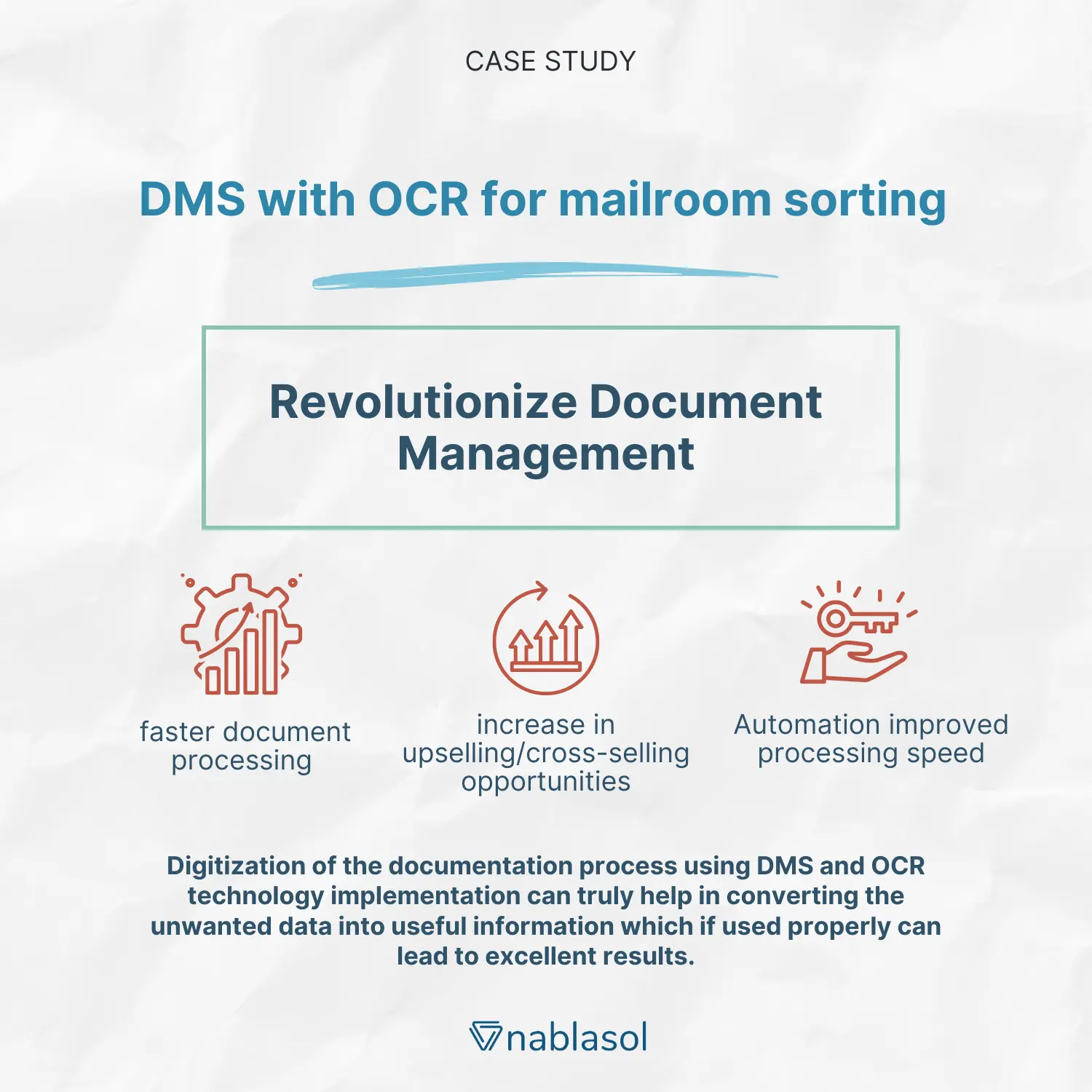A journey of a client in achieving over 80% efficiency in document processing using Digitization and Mailroom Automation
Executive Summary
It doesn’t matter you are in which industry in the present age, there will be a point where the organization will be flooded with a lot of information consisting of critical as well as unnecessary data points. With the help of Mailroom sorting technology coupled with the game-changing OCR technology, it helps customers be aware of the key events at the priority level. When it comes to the industry like accounting and taxation, even the slightest delay in completing the loop may cause the organization and the client a bomb of money. This case delves into the problems that were faced by a tax resolution company based out of Jacksonville, Florida.
Client Challenges
The company receives an overwhelming amount of legal documents, on behalf of its clients from the US Internal Revenue Service (IRS). Apart from these they also received tax and accounting documentation directly from the clients. The usual scenario consisted of manual sorting, scanning, and linking of the document to the exact account in the CRM. Over the period, manual errors started growing which soon became a cause of concern for the business.
Due to the overwhelming amount of documents in the mailroom, they installed the Falcon Red Machine which helped to automatically open the envelopes, unpin the document, scan the information and store it in the folder with basic metadata tagging for future usage. But processing those documents was a manual and cumbersome process.
Our Approach
When you have such a huge amount of data while retrieving the same, inconsistent search results would negate the purpose with which Document Management Falcon Red Machine was implemented. Optical Character Recognition (OCR) technology converts the scanned document into whichever format has a text search that allows content search on those documents.
To help manage the tens of thousands of documents that are coming in every month we came up with an application to help streamline the process and automate a part of it using OCR. Following were the characteristics of the data on the documents around which the Document Management System (DMS) was designed:
- Over 30% of the documents received from the IRS department contained 3D barcodes, which contain four different data points about the document. The letters had the personal information of the addressee in the first half of the page. Using OCR, we extracted this information, and appropriate records of the file were created in the CRM. The file was moved under the DMS without any manual intervention.
- Approximately 40% of the documents had a 2D barcode with information about the type of letter with limited data points. The client’s identity information here too was on the first half of the first page of the document which was extracted via OCR and linked to CRM and DMS. In the first version of the solution, a custom workflow was created for these documents so that an operator could fill in the missing info which had to be extrapolated from the document content. Eventually, a lot of this manual work was automated too for most of the documents, with only a small percentage among these needed any manual intervention.
- One of the problems was that 30% of documents were ones that had no set structure of the documents and came without any barcodes. These were made to go through the OCR process to try and get the unique client identifiers to match the CRM accounts. If a match was found with 100% probability, these were automatically categorized, else they went to the classification and linking workflow with suggested matches and a mailroom operator would manually process the docs.
Some of the incoming documents may need a generation of additional workflows for client servicing and some may even elicit a sales opportunity. Based on document classifications and information it triggered different servicing/sales workflows with varying priority levels in the CRM if an action was needed on the document.
Business Impact
- 25% increase in upselling/cross-selling opportunities for existing clients
- 80% reduction in the document processing time due to DMS and OCR implementation
- Unnecessary manual work was reduced which reduced the cost overheads of the client
- Automation also increased the processing speed which inturns improved client servicing levels
Digitization of the documentation process using DMS and OCR technology implementation can truly help in converting the unwanted data into useful information which if used properly can lead to excellent results.
